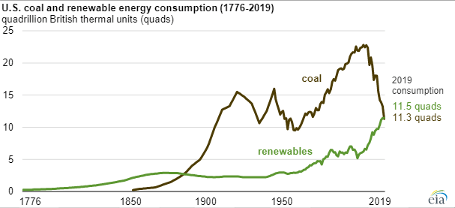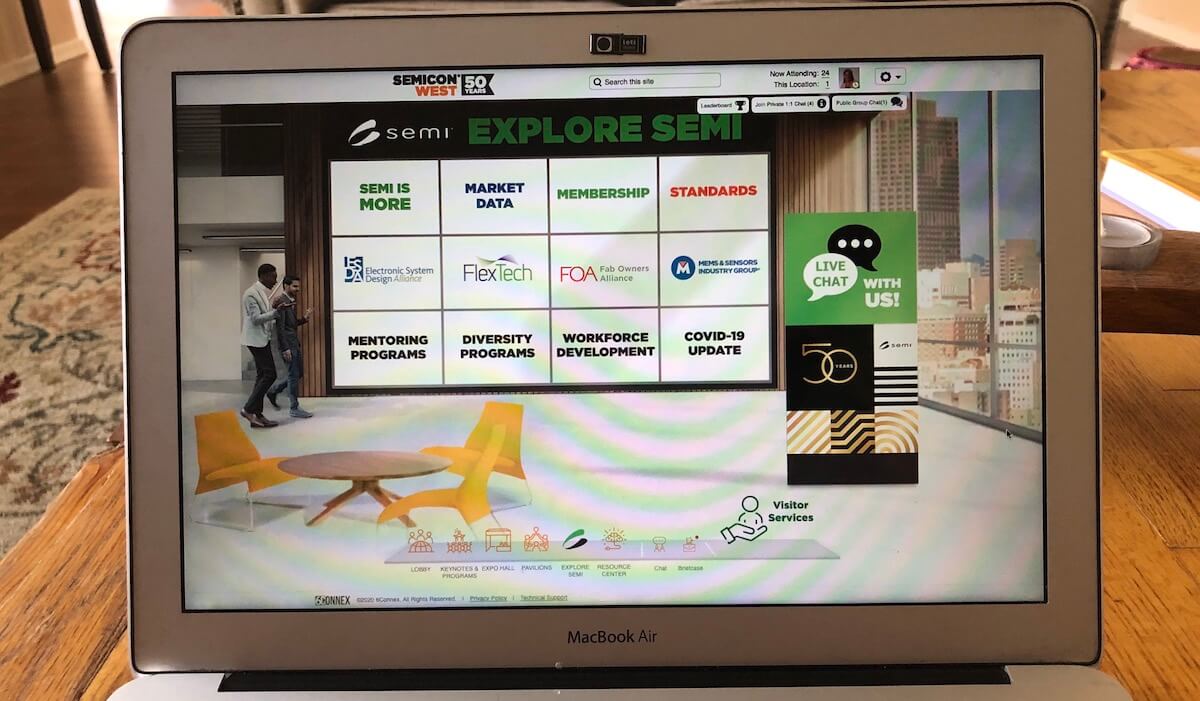Another SEMICON West has come and gone. Well almost gone, this one will be with us virtually until mid-September.
SEMI’s 50th SEMICON West wasn’t the celebration that they expected; however, I think it turned out all right, considering the circumstances. As Larry Broome posted “my feet hurt less, the food was better and cheaper, and the bathrooms were cleaner”; although, I personally missed the crab cakes and the sushi typically served at the TEL networking party.
As a virtual event, I was able to attend or listen to all of the talks; typically, I need to pick and choose which ones I will listen to when I attend live. Because I have a day job, I appreciated being able to listen to the talks over the period of multiple days, and go back and re-listen to what I didn’t quite catch the first time. However, I was extremely disappointed that former Vice President Al Gore’s talk was not available on demand. This was extremely frustrating for executives and people like me who thought they would be able to review this at a later time, especially since SEMI had indicated it would be available online for some period of time. The good news is that most of the material is available here until September 20, 2020, so you can relive the 2020 Semicon for some time to come.
Watching SEMICON West Grow Up
Because I attended my first SEMICON West in 1983 at San Mateo, I missed out on the first several, but have attended every SEMICON West since. I have a long history with the show and SEMI. I am probably one of the few that attended as a buyer, seller, and then pundit, and now more along the lines of a reporter. In the early days, there was working equipment at the show; or at least you hoped it would work. In addition to your sales and marketing teams, you had a team of technicians whose job it was to make sure the equipment performed while at the show. The show was about new equipment releases, forecasts, and meetings in the motorhomes. Purchase orders would be submitted on the show floor if customers were impressed enough with the new equipment.
Until SEMI started charging admission, there were a considerable number of engineers, operators, and technicians that would attend the show. While most of these were not decision-makers, they were all users, and some of the feedback you would receive was insightful; about how your equipment was perceived in the fab, and you also might gain some competitive information.
The majority of the companies set up in the exhibition halls at the fairgrounds. As the show expanded the new arrivals were located in the grandstands, so you would occasionally see (and definitely smell) the horses as you made the trip. I always wondered if the fact that Novellus was in the grandstands away from the rest of the show had anything to do with the decision for Rick Hill to use the Yerba Buena area when the show moved to San Francisco.
The move to Moscone was both a location and a date change, from before Memorial Day weekend to after the Fourth of July weekend. So instead of having a long weekend to relax after the show, we now had a long weekend to prepare for the show and then collapse afterward. Initially, with the move to San Francisco, there was also a show in San Jose for the metrology and back end equipment. This caused a bit of gnashing of teeth as some companies had booths in both places, and as an analyst, you would need to spend time at both events. The completion of Moscone West made it possible for everyone to be in the same location.
As was mentioned in the reminiscing webinar, the larger equipment companies slowly moved off the show floor into hotels. As this happened, smaller components companies moved in to take their place. The transition continued as the show became a place to communicate more with Wall Street, and so investor meetings became a significant part of the show.
Sustainability, Diversity, and the Digital Divide: Opportunity and Missed Boats
For the past 2 years, the keynote has seemed to focus on how AI will drive the semiconductor industry forward. This year’s talks touched on the importance of AI, but more on how AI may help to solve the pandemic, or perhaps better predict the next one, so we could be better prepared. SEMI and Applied Materials (AMAT) managed to create a strong focus on sustainability and conservation.
Many speakers discussed the detriments of carbon build-up and have committed to a carbon-neutral business in the future. Art de Gues gave some practical advice on how to personally reduce your carbon footprint.
Renewables
Francoise covered and commented on the major energy speakers in her blog so I will not revisit that here, but I think this is one area that SEMI missed the boat regarding progress in renewables. In recent years solar was part of SEMICON West. This year, not so much, although in the past year there have been some fabulous news on the green energy front. Renewable energy consumption surpassed coal. That is fantastic news that should have been highlighted by at least one of the speakers at the show.

Even more important is that the storage of renewables has taken a huge leap in the past few years and instead of just solar or wind farms being built, they are being combined with storage facilities. This means when the sun goes down or the wind stops, renewable energy can still be supplied, and you don’t have to fire up a carbon burning facility to keep the energy flowing to the grid.
Diversity and Inclusion at SEMICON West
Diversity, inclusion, and the new workforce had more focus than I remember in the past. SEMI has had the smart workforce pavilion for a number of years to help attract new talent. However, in an extremely cyclical industry that would hire when things were going crazy and then layoff when the industry turned slower, it can be difficult to attract talent, when you might get laid off the next year.
One talk that really resonated with me was the discussion with Gayle Jennings-O’Byrne. In my time as a hiring manager it was rare to find a person of color that was interviewing for a position as an engineer, or as an analyst. So, it was refreshing to hear that there is a very active diverse tech community, that according to Jennings actually perform better than their counterparts. I’m hopeful that some of the equipment and semi companies’ VC’s were listening and that they will steer some money to Gayle’s fund to support this diversity in the tech industry.
To my simple mind, improving diversity is about creating opportunities for people to succeed. I was fortunate enough to have joined a company that gave me extensive training that was a significant help in my transition from academia to the industry, if that exists today, I’m not aware of it. There are intern programs that cover part of this, SEMI works hard to introduce high school students to the tech industry and just announced a partnership with GLOBALFOUNDRIES to create an apprentice program, but I think more is needed, and it is up to companies to implement the training and create the opportunity for new blood in the tech space.
The Digital Divide
Another missed boat: Closing the gap on the digital divide. This is a huge opportunity for the tech industry to step up and give back. I live in a community where there is a significant digital divide. There is only one internet provider that has the bandwidth for video conferencing, and if you are making minimum wage it is cost-prohibitive to use that service. When distance learning started, the district noticed that students were falling behind or did not have the wherewithal to distance learning. The district provided laptops, hotspots for those families that could not afford the internet, and the teachers followed up with their students to ensure they were keeping up. There are many school districts in the United States that do not have these resources. The Wall Street Journal has done a good job of covering this in a recent article by Tawnell Hobbs titled, “Are They Setting Up my Children for Failure? Remote Learning Widens the Education Gap?”
The author describes a community in Mississippi that does not have the technology resources, and how parents tried to cope to keep their children from falling behind. What an opportunity for tech companies to step in and help level the playing field, create opportunity, and to introduce and educate students about a career in technology! Helping to provide equipment, making sure the internet is accessible for all, and creating the educational opportunity for success would go a long way in making a more diverse workforce. Possibly something for SEMI to think about having speakers discuss in next year’s show. ~ Dean



















